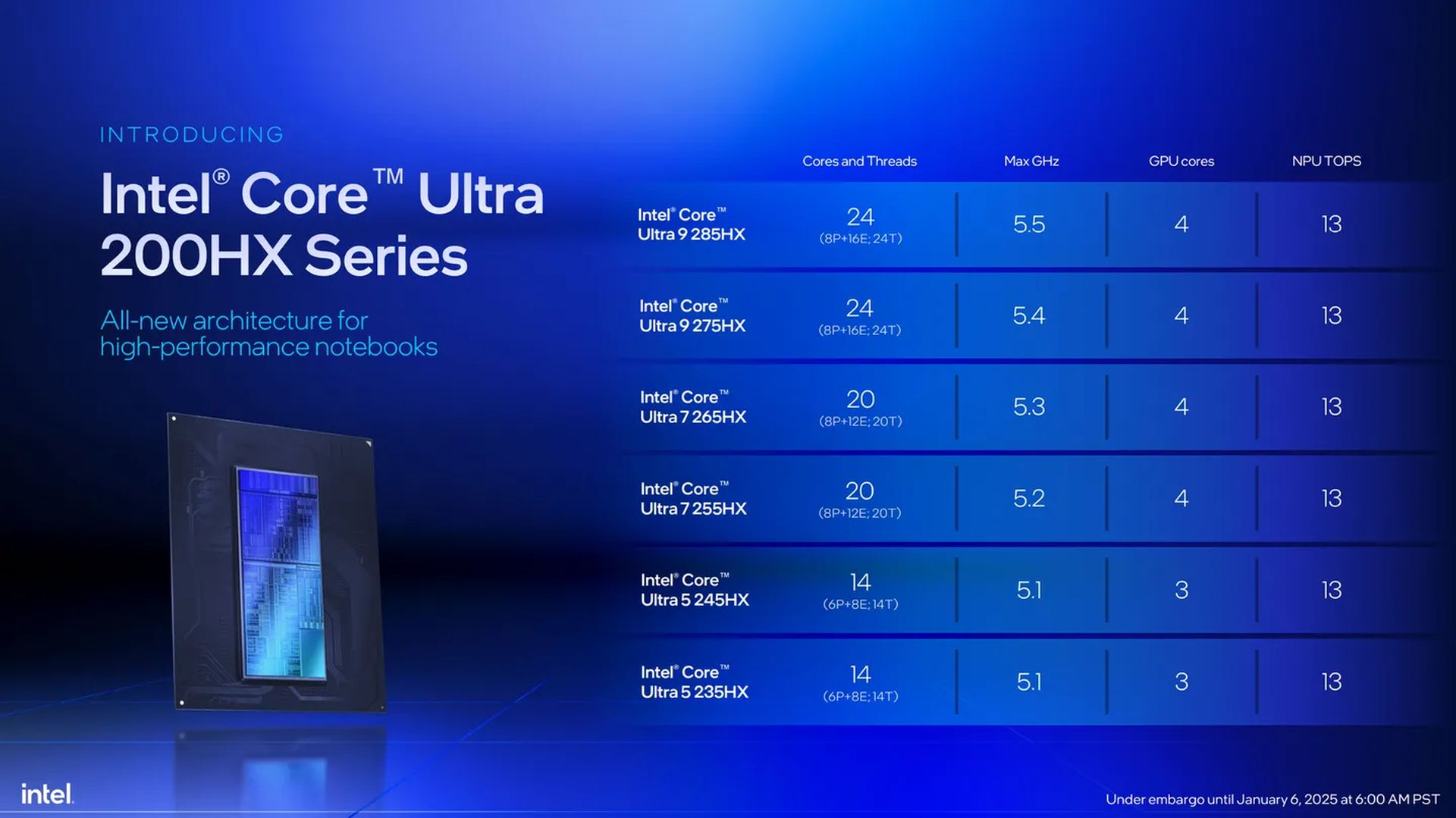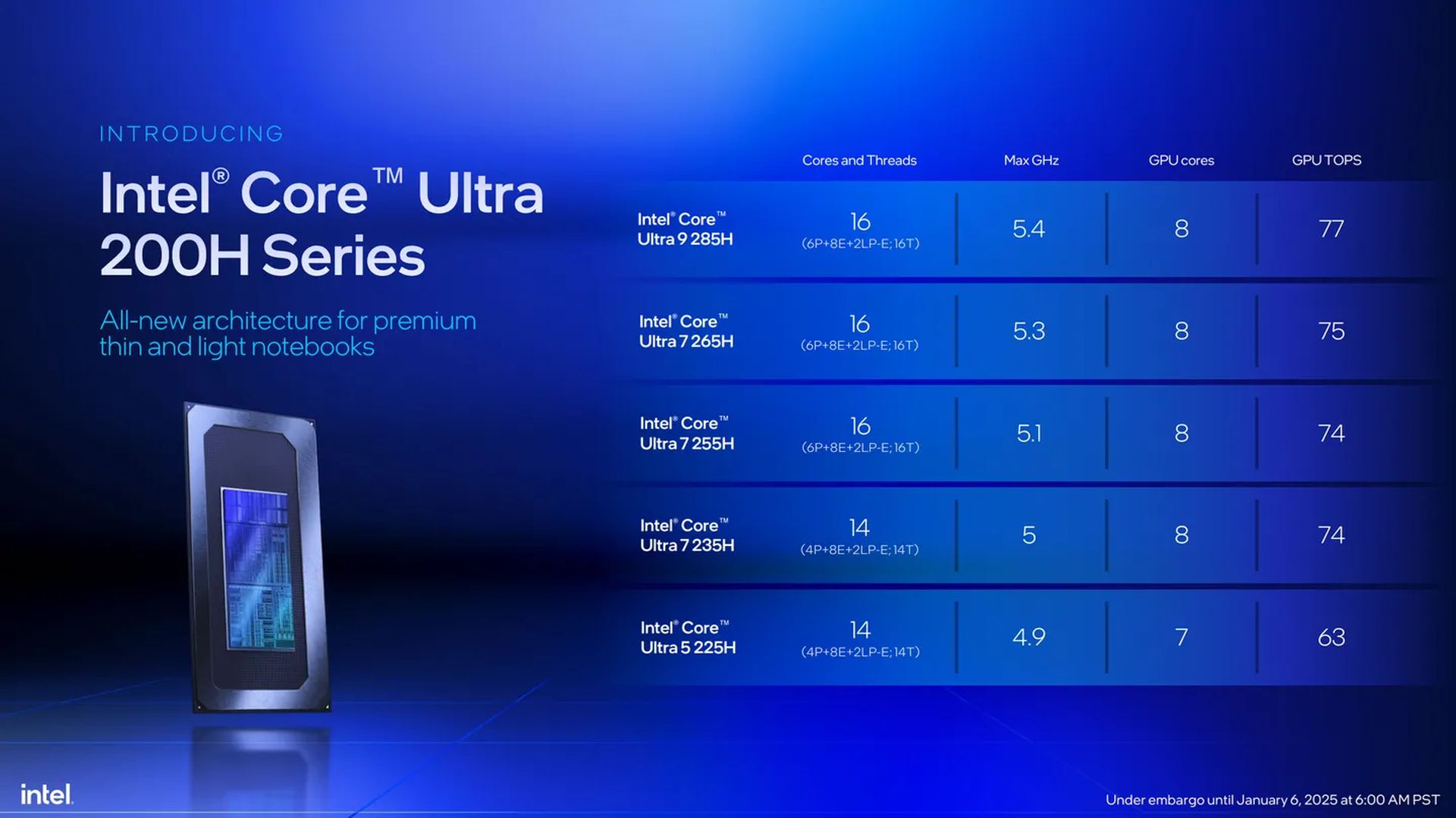At CES 2025, Intel unveiled its Arrow Lake CPU architecture, announcing that it will power a new generation of gaming laptops, particularly through the Intel Core Ultra 9 285HX model. This architecture features a dedicated NPU (Neural Processing Unit) that enhances AI performance, alongside a dedicated GPU for higher graphical demands.
Intel unveils Arrow Lake CPUs for next-gen gaming laptops
The Intel Core Ultra 200HX processors will include up to 24 cores, with the 285HX variant providing 8 performance cores and 16 efficiency cores. The performance cores will handle more intensive tasks while the efficiency cores manage background processes. Unlike previous iterations, these performance cores are single-threaded; however, improvements in instructions per clock (IPC) are expected to mitigate performance losses.
Intel stock slips another 2.9%: Can it bounce back from a 57% slide?
The Arrow Lake series comprises several tiers: the 200U series prioritizes efficiency, while the 200H and 200HX series focus on high performance. The 200U processors cater to mainstream and on-the-go users, supporting a maximum of 12 cores and aiming for extended battery life, boasting up to 20 hours of basic usage and about 10 hours during Microsoft Teams meetings. However, their NPU capabilities are limited to 13 trillion operations per second (TOPS).

The Core Ultra 200V series, designed for premium ultraportables, supports up to 48 TOPS, making it compatible with Intel’s Copilot+ PC program for local AI tasks. The 200H series, aimed at power users, provides a high core count (14 to 16 cores) with higher-voltage Intel Arc graphics but retains modest NPU capabilities at 11 TOPS.
The most robust offering, the 200HX series, suits creators and gamers requiring exceptional processing power. These chips range from the Core Ultra 5 235HX to the Core Ultra 9 285HX, featuring configurations that deliver up to 13 TOPS from the NPU but remain focused on computational power rather than significantly enhanced AI performance.
Intel also highlighted advancements in connectivity with the latest models, offering maximum compatibility with Thunderbolt 5 and AI-based networking optimizations through integrated Wi-Fi 7. This technology ensures faster and more reliable connections, further bolstering laptop capabilities.

Intel plans to roll out these new processors across various laptop designs starting this month, with further releases to follow in the first quarter of 2025. The introduction comes as the company approaches a critical phase in reclaiming its position amid significant market competition from companies like AMD and Qualcomm, who are also advancing their own processor technologies.
Intel’s Arrow Lake CPUs could be their Hail Mary at CES 2025—but will it be enough to reclaim the throne? With AMD dominating in efficiency and performance and Apple flexing its silicon muscle, Intel’s got a lot to prove. Arrow Lake promises groundbreaking power-per-watt gains and AI-accelerated features, but we’ve heard similar pitches before. Execution will be key.
The big question: Can Intel meet delivery timelines and outperform Ryzen and M-series chips? If not, Arrow Lake might end up another footnote in Intel’s long slide.
Featured image credit: Brecht Corbeel/Unsplash





